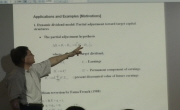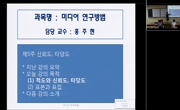본 연구는 성 소수자 장병들의 군 생활에 영향을 미치는 위험요인 및 보호요인을 도출하는데 목적이 있다. 이를 위하여 군 복무 경험이 있는 성 소수자 8명을 대상으로 개념도 방법에 근거하...
http://chineseinput.net/에서 pinyin(병음)방식으로 중국어를 변환할 수 있습니다.
변환된 중국어를 복사하여 사용하시면 됩니다.
- 中文 을 입력하시려면 zhongwen을 입력하시고 space를누르시면됩니다.
- 北京 을 입력하시려면 beijing을 입력하시고 space를 누르시면 됩니다.

군대 내 성 소수자의 군 생활 적응을 위한위험요인과 보호요인 연구 = A Study on Deriving the Risk Factors and Protection Factors for the Adaptation of Sexual Minorities in the Military
한글로보기https://www.riss.kr/link?id=A109118477
- 저자
- 발행기관
- 학술지명
- 권호사항
-
발행연도
2024
-
작성언어
Korean
- 주제어
-
등재정보
KCI등재
-
자료형태
학술저널
-
수록면
179-208(30쪽)
- 제공처
-
0
상세조회 -
0
다운로드
부가정보
국문 초록 (Abstract)
본 연구는 성 소수자 장병들의 군 생활에 영향을 미치는 위험요인 및 보호요인을 도출하는데 목적이 있다. 이를 위하여 군 복무 경험이 있는 성 소수자 8명을 대상으로 개념도 방법에 근거하여 4단계로 분석을 진행하였다. 첫 단계는 심층 면담을 위한 초점질문을 하였고, 두 번째 단계에서는 연구참여자 개인별 50분 내외로 심층 면담을 실시하였다. 세 번째 단계에서는 면담 간 도출된 핵심문장들을 분류카드 형태로 제작한 후, 연구참여자들 각자가 이해되는 방식으로 카드를 범주별로 분류하였다. 마지막에는 다차원 척도법과 군집분석을 실시하였다. 분석 결과 위험요인은 총 5개의 군집으로 범주화 되었다. 군집 1은 이해받지 못할 것에 대한 막연한 두려움, 군집 2는 관리 중심의 기계적 접근, 군집 3은 편견, 인식과 교양의 부족, 군집 4는 마초적 조직 분위기, 군집 5는 잠재적 범죄자 취급이었다. 보호요인은 총 4개의 군집으로 범주화 되었는데, 군집 1은 편견없는 수용, 군집 2는 개방적 태도를 지닌 대화 상대, 군집 3은 노골적인 혐오 표현으로부터의 보호, 군집 4는 개인의 유능감 발휘로 도출되었다. 이러한 연구결과를 바탕으로 성 소수자 장병들의 위험요인을 제거하고, 보호요인을 유지시키기 위한 구체적 방안을 제안하였다.
다국어 초록 (Multilingual Abstract)
The purpose of this study is to identify risk factors and protective factors that influence the military life of LGBTQ+ service members. To achieve this, an analysis was conducted in four stages based on a concept mapping with a sample of eight LGBTQ+...
The purpose of this study is to identify risk factors and protective factors that influence the military life of LGBTQ+ service members. To achieve this, an analysis was conducted in four stages based on a concept mapping with a sample of eight LGBTQ+ individuals with military service experience.
In the first stage, focused questions were asked for in-depth interviews. In the second stage, individuals in-depth interviews, lasting approximately 50 minutes each, were conducted with research participants. In the third stage, the elicited interview sentences were transformed into categorized cards, and participants categorized these cards in a manner that made sense to them. Finally, multidimensional scalling and cluster analysis were conducted.
The analysis results categorized risk factors into five clusters. Cluster 1 consisted of vague fears of being misunderstood, Cluster 2 focused on a mechanical approach with a management-centric perspective, Cluster 3 encompassed bias, perception, and a lack of diversity, Cluster 4 revolved around a macho organizational atmosphere, and Cluster 5 involved the treatment of potential offenders. Protective factors are categorized into four clusters. Cluster 1 consisted of embracement without bias, Cluster 2 encompassed partners for conversation who is open-minded, Cluster 3 consisted of protection from out-spoken hatred expression, and Cluster 4 encompassed revelation individual ability. Based on this results, specific guidelines are suggested for eliminating risk factors and maintaining protective factors for LGBTQ+ service members.
동일학술지(권/호) 다른 논문
-
- 한국군사회복지학회
- 박금영
- 2024
- KCI등재
-
북한이탈주민 일자리 창출과 복지향상을 위한 정책 제안: 포항시를 중심으로
- 한국군사회복지학회
- 이강문(Kang-Moon Lee)
- 2024
- KCI등재
-
직업군인의 성장기 가정폭력노출경험과 배우자폭력 가해의 관계에서 문제음주의 매개효과
- 한국군사회복지학회
- 김재엽(Jae Yop Kim)
- 2024
- KCI등재
-
동계입영훈련을 통한 학군사관후보생의 가치변화, 복지 및 체력변화 경험의 내러티브 탐색
- 한국군사회복지학회
- 김정후(Jeong Hu Kim)
- 2024
- KCI등재




 스콜라
스콜라






